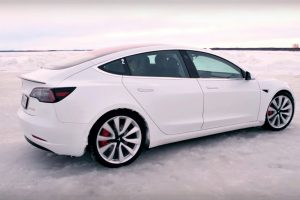- 🗳️ Elon Musk faced criticism for expressing discomfort with growing Tesla’s AI leadership without ~25% voting control.
- 💬 Musk clarified during Q4 earnings call that he doesn’t seek full control but wants influence to avoid being easily voted out.
- 🤝 Musk mentioned challenges with activist shareholders and expressed the idea of a dual-class stock for influence.
- 🌐 Not motivated by additional economics, Musk aims to be an effective steward of powerful technology with a 25% control.
- 💰 Musk’s reduced stake in Tesla is linked to his Twitter acquisition, where he sold $22.9 billion worth of TSLA shares in 2022.
In the ever-evolving landscape of technology and business, Elon Musk, the enigmatic entrepreneur and CEO of Tesla, has once again sparked intense debate and scrutiny. Musk’s recent expression of the desire for a 25% voting share at Tesla has raised eyebrows and generated considerable discussion within the investment community. In this blog post, we delve into the intricacies of Musk’s position, the motivations behind his quest for influence, and the implications for Tesla’s future.
Elon Musk’s Unconventional Approach
- Facing Criticism and Uncomfortable Growth
- Musk faced criticism for suggesting discomfort in steering Tesla toward AI leadership without substantial voting control.
- Investors and critics questioned the motives behind this stance, perceiving it as a form of leverage or even blackmail.
- Q4 Earnings Call Insights
- Musk addressed the concerns during the Q4 and FY 2023 earnings call, shedding light on his vision for Tesla’s future.
- Contrary to seeking absolute control, Musk emphasized the need for influence to prevent easy dismissal, especially in the presence of activist shareholders.
Navigating Challenges and Seeking Influence
- Challenges with Activist Shareholders
- Musk highlighted challenges with entities like Institutional Shareholder Services (ISS) and Glass Lewis.
- The mention of activists infiltrating these organizations raised questions about the dynamics between Tesla and influential shareholder voices.
- The Dual-Class Stock Proposal
- Musk floated the idea of a dual-class stock structure as a potential solution.
- This proposal aims to balance influence without compromising the ability to be ousted, a delicate equilibrium in corporate governance.
Motivations Beyond Economics
- Stewardship of Technology
- Musk clarified that his pursuit is not driven by economic gains but by a desire to be a responsible steward of powerful technology.
- The 25% control figure emerges as a strategic balance, providing significant influence without enabling absolute dominance.
- Aiming for Influence, Not Control
- Musk expressed the intention to have a strong influence without wielding complete control.
- This nuanced approach aims to ensure responsible decision-making while avoiding unchecked authority.
The Twitter Connection and Financial Implications
- Reduced Stake Linked to Twitter Acquisition
- Musk’s reduced stake in Tesla is tied to his acquisition of the social media platform Twitter, rebranded as X.
- The sale of $22.9 billion worth of TSLA shares in 2022 funded the Twitter acquisition, impacting Musk’s influence within Tesla.





